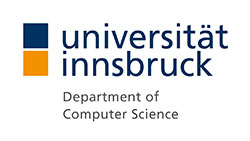We make the measurability of our R&D results one of our primary tasks. We want to show to the world that semantic technologies are becoming reality. Find out more about our results and our spin-off companies.
Logics for the Semantic Web
This chapter introduces a number of formal logical languages which form the backbone of the Semantic Web. They are used for the representation of both ontologies and rules. The basis for all languages presented in this chapter is the classical First-Order Logic. Description Logics is a family of languages which represent subsets of First-order logic. Expressive description logic languages form the basis for popular ontology languages on the Semantic Web. Logic programming is based on a subset of First-order logic, namely Horn Logic, but uses a slightly different semantics and can be extended with non-monotonic negation. Many Semantic Web reasoners are based on logic programming principles and rule languages for the Semantic Web based on logic programming are an ongoing discussion. Frame Logic allows ob ject-oriented style (frame-based) modeling in a logical language. RuleML is an XML-based syntax consisting of different sub-languages for the exchange of specifications in different logical languages over the Web.
Contact person in charge.

